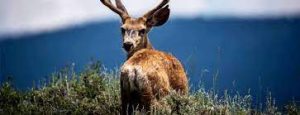Our Blog
Home / Blog
The Many Faces Of Conservation

By Dr. Priyadarshini Chakrabarti (Basu) (Post Doctoral Researcher, Oregon State University, USA)
It is always a good feeling when we come across a word that we have heard a thousand times and we can prod our heads a little and remember what it means. But do we truely understand its meaning? “Conservation” is perhaps such a familiar word. Our courses have taught us conservation; media has informed us about various conservation reports; governments globally have strategized conservation and we do our little parts by visiting these sanctuaries of protection and think we know what conservation really is.
Defining conservation is easy – the act of conserving is basically preservation of wildlife. In other words, the official supervision of wild flora and fauna, rivers, forests, and other natural resources in order to preserve and protect them through prudent management and the careful utilization of a natural resources in order to prevent depletion can be termed conservation in a broad sense. We can also try and conserve human rights, valuable art, buildings of value and so on. Let us look into conservation with respect to wildlife and their natural habitats in this article.
The World Conservation Union (IUCN) has a key role in promoting the establishment of protected areas throughout the world. In India, the Government has been very proactive when we deal with conservation. The Wildlife Protection Act of 1972 laid the foundation to what we had and what we practice now. The Act ensured protection of plants and animal species. Before 1972, India only had five designated national parks. Among other reforms, the Act established schedules of protected plant and animal species. The major goal was to ban the hunting or harvesting of these species. The Act armoured wildlife against incessant hunting for trophies, destruction of habitats by indiscriminate felling and changing our outlook – it arose the sanity in us and we have every role to play to ensure conservation prevails.
For the uninitiated, the major categories of conservation are in situ (on site conservation strategies in the natural habitat systems like forests etc.) and ex situ (gene banks, captive breeding, zoos etc.). The major in situ conservation categories we have in India are National Parks, Wildlife Sanctuaries, Tiger Reserves, Biosphere Reserves, Reserve Forests, Village & Panchayat Forests, Private Protected Areas and Conservation Areas. They each have their subtle differences based on the degree of intervention civilians have, the types of protection they provide and the categories of wild flora and fauna they deal with. As of July 2015, there are 103 national parks encompassing an area of 40,500 km2 comprising 1.23% of India’s total surface area. India also has 537 wildlife sanctuaries. There are about 50 tiger reserves governed by Project Tiger, and are of special significance in the conservation of the tiger. There are also 18 Biosphere Reserves in India.
Conservation biology is the scientific study of how to maintain and restore habitats and protect wildlife. They provide the necessary scientific information for sustainable land and water management. But being a conservation biologist is much more. You not only help conserve all of these but you also have to raise awareness among citizens, take part and stay up to date with global initiatives and be the bridge between important stakeholders. At the basis of conservation is a key element – biodiversity. It is biodiversity which directs the various strategies of conservation. Protection measures for biodiversity have been widely used as conservation tools in order to maintain a representative sample of unaltered species and eco-systems for the future, and to limit the potential for environmental degradation through human mismanagement of resources.
The effective ways to practice conservation would be series of measures that need to be commenced. We need to first evaluate biodiversity at the particular region. The rarer the species, the more protection it needs. The more specialized the needs of a particular species are, the more specific the conservation needs to be. Natural and anthropogenic pressures have resulted in extinction of species in the past and many present species are rapidly declining. Hence evaluation is an important precursor to any conservation strategy. The next step would be to develop target oriented strategies based on the evaluation reports. General strategies may help preserve the geographic location but specific strategies need to be cultivated to help the flora and fauna in need. The third step would be to implement these strategies as planned. The implementation is to be targeted to the species in need and also the habitat they live in. The role of every stakeholder is crucial and the governments need to ensure the legality of the implementation. The final step would be to monitor biodiversity after the strategies have been implemented. The monitoring phase is critical because this phase will direct us to further evaluations and strategies for implementing other measures.
Scientists today have various approaches to conservation. Conservation has stepped foot into mainstream research where molecular studies have advanced the various conservational strategies towards a better understanding. Global collaborations have strengthened the implementations of the strategies. The various governmental and non-governmental agencies have been actively involved in conservation policies. Ecotourism and wild life tourism seem to have opened our eyes to the many challenges of conservation but this is being severely criticized by many. Even though ecotourism is an effective fundraiser for conservation through the many fees they impose raising awareness in tourists and advertising the needs of conserving wildlife efficiently in the meanwhile, close proximity with wildlife may only make the wild animals less afraid of humans and hence less wary of predators and put the wild animals at greater risks. Conservation strategies hence have to be constantly monitored and evaluated to ensure the wild flora and fauna are not being further endangered.
Ecosystem services as a concept and framework for understanding the way in which nature benefits people has led to a suite of approaches that are increasingly being used to support sustainable management of biodiversity and ecosystems. However, this is also debatable. Even though a number of conservation scientists believe that ecosystem services can help shape conservation strategies, a number of conservation biologists point out the risks we impose on wild flora and fauna when we strategize based only on the benefits we derive from them. The same is true when we bring in the element of agriculture. Lands which need safeguarding but happen to surround agricultural regions have become a topic of consideration. Increased population have intensified the pressure on agricultural sectors. Encroachment of various forms into protected areas are common, endangering humans, plants and animals alike. Conservation in these areas often involve costs which are demanding, at least in the short – term, and a common agreement for using scarce resources is frequently difficult. Hence extra measures of care and sensitivity need to be implemented when conservation measures need to be strategized.
Conservation is multifaceted and involves costs and benefits for humans and wildlife. The natural habitats are the homes of wild flora and fauna and need measures which can sustain them in the long term. Valuing human life is important but valuing wildlife is equally important when we need to strike a balance in nature. The many faces of conservation require knowledge of the species requirements, deep understanding of the conservational values, consideration of the economic needs of humans, looking into the ecological consequences of the strategies that we implement, global cooperation and harmony for the validation of such implementations, understanding for effective collaborations between the stakeholders and awareness among us to help preserve and conserve wild flora and fauna.






